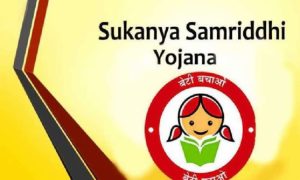The Permanent Account Number, or PAN, has been a key part of financial system for decades in India. It’s how individual taxpayers and businesses connect to important economic activities while ensuring transparency and compliance. Over time, PAN has become indispensable in India’s growing digital economy. Now, the government is giving it a major upgrade with PAN 2.0, a move designed to make tax-related services more user-friendly and equipped with advanced technology.
What is PAN 2.0?
PAN 2.0 is an ambitious initiative approved by the Cabinet with a budget of Rs 1,435 crore. It aims to modernise PAN and TAN services with advanced e-governance, ensuring faster and more efficient processes. By consolidating multiple platforms into a single, unified system, PAN 2.0 offers a smoother, more secure experience for taxpayers.
The upgraded system also uses improved technology to detect and eliminate duplicate PAN requests. This ensures compliance with regulations and reduces the risk of individuals holding multiple PANs.
Who Needs to Obtain PAN?
- Individuals with Taxable Income: Any person whose total income exceeds the tax-exempt limit must have a PAN.
- Charitable Trusts: Trusts required to file returns under Section 139(4A) of the Income-tax Act must obtain a PAN.
- Business and Professionals: Anyone running a business or profession with total sales, turnover, or gross receipts exceeding Rs 5 lakh in a year must get a PAN.
- Specified Financial Transactions: Individuals intending to enter financial transactions where quoting PAN is mandatory need to apply for it.
- Non-Individuals and Associated Persons: Non-individual entities (e.g., companies, trusts) and their associates must apply for PAN if their financial transactions exceed Rs 2.5 lakh in a financial year.
Read More: PhonePe is offering medical insurance for these diseases starting at Rs 59 per year: All the details
Penalty for Not Having PAN Cards
Not having a PAN card when required, providing incorrect details, or holding multiple PANs can result in hefty penalties:
- Penalty for Violations: Section 272B of the Income-tax Act imposes a fine of Rs 10,000 for non-compliance.
- Multiple PANs: No individual is allowed to hold more than one PAN. If someone does, they must inform the jurisdictional assessing officer to deactivate or delete the additional PAN.
Adhil Shetty, CEO of Bankbazaar.com, explains, “Under PAN 2.0, advanced mechanisms will prevent duplicate PAN issuance. This enhancement ensures stricter compliance and reduces errors.”
Read More: UPI rule changes: UPI Lite transaction, wallet limit hiked, check details here
Why PAN 2.0 is a Game-Changer
PAN has been around since 1972 as a unique 10-digit alphanumeric code linking financial transactions to the Income Tax Department. It’s used for everything from paying taxes to claiming TDS credits and filing returns.
PAN 2.0 takes this legacy forward by making the process faster, more secure, and easier to use. Its advanced features include:
- Simpler Services: A complete overhaul of PAN and TAN systems for efficiency.
- Unified Platform: Multiple portals are being merged into a single, streamlined interface.
- Improved Security: Better technology to secure data and detect duplicate entries.
- Enhanced User Experience: A focus on making the system accessible for everyone.
Shetty says, “India’s digital economy is expanding rapidly, and PAN is a critical enabler of this growth. PAN 2.0 aligns with the government’s vision of a tech-driven financial ecosystem, ensuring smoother compliance and greater transparency.”
The Big Picture
PAN 2.0 isn’t just an upgrade; it’s a reimagining of how India handles taxpayer registration and financial compliance. By integrating smarter tools and modernised systems, it makes life easier for taxpayers and strengthens India’s digital future. For taxpayers, this means faster services, fewer errors, and more convenience.



































